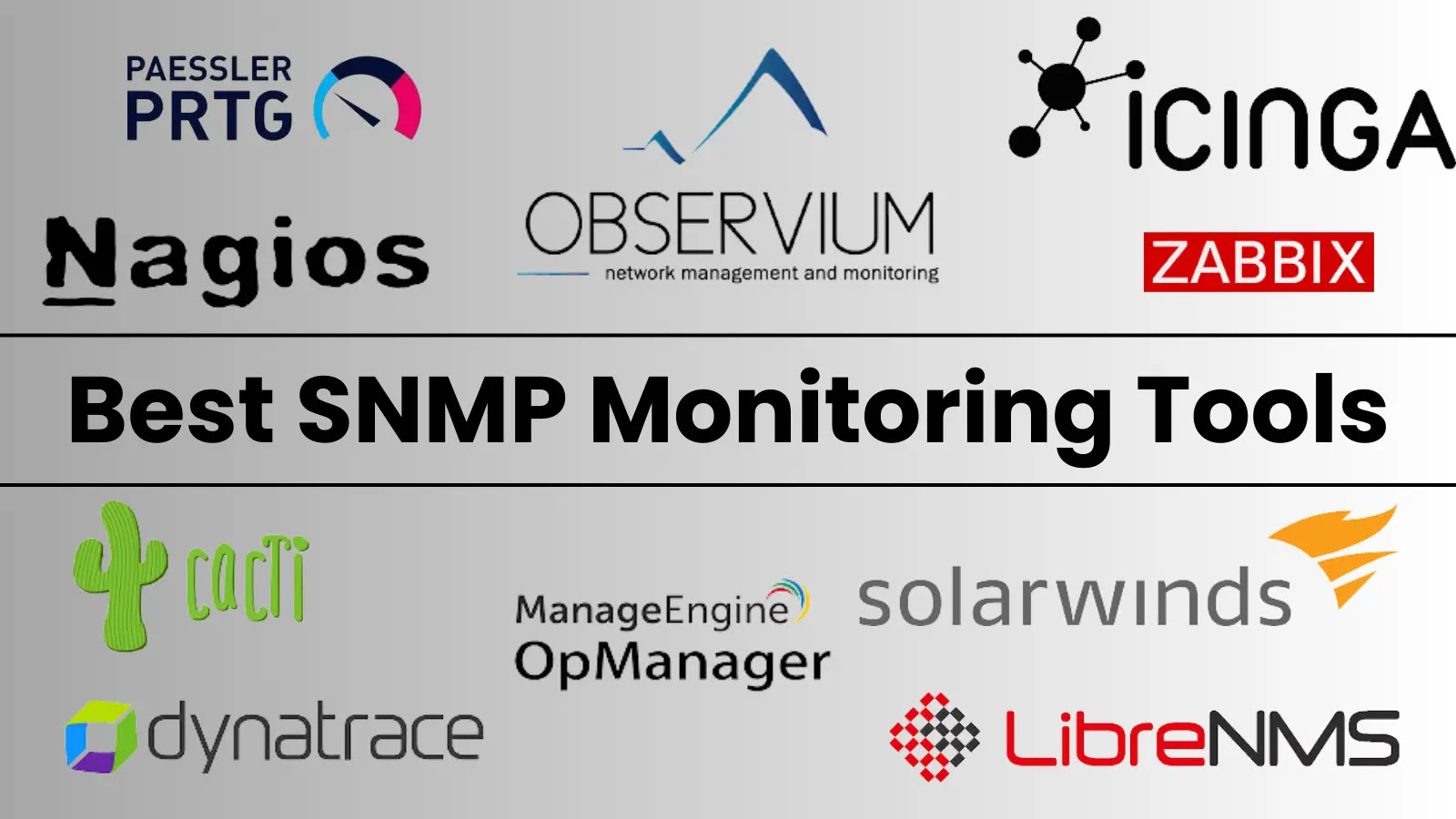
20 Best SNMP Monitoring Tools in 2025
The Crucial Role of SNMP Monitoring Tools in 2025 Network Security and Operations
In the intricate landscape of modern IT infrastructure, network stability, performance, and security are paramount. Downtime, sluggish applications, or undetected anomalies can cripple an organization, leading to significant financial losses and reputational damage. This is where robust network monitoring becomes indispensable, and at its core lies the Simple Network Management Protocol (SNMP). SNMP monitoring tools are not just beneficial; they are essential for any organization seeking to maintain a resilient, high-performing, and secure network environment. They act as the eyes and ears of network administrators, providing the critical data needed to proactively identify, diagnose, and resolve issues before they escalate.
These powerful tools leverage SNMP to gather and organize vital information from a diverse array of network devices, including routers, switches, servers, firewalls, and even printers. By providing real-time insights into device performance, network traffic patterns, and operational status, SNMP monitoring solutions empower IT teams to optimize network resources, ensure service availability, and bolster overall network security postures. Without them, administrators would be navigating a complex digital ecosystem blindfolded, reacting to problems rather than preventing them.
Understanding SNMP: The Backbone of Network Visibility
SNMP, or Simple Network Management Protocol, is an industry-standard protocol for managing devices on IP networks. Most network devices, from enterprise-grade routers to consumer-grade modems, support SNMP. It allows network management systems (NMS) to collect information from, and configure, network devices remotely. The protocol operates using a manager-agent model:
- SNMP Manager: This is typically the network management station or the SNMP monitoring tool itself. It sends requests to agents, receives responses, and can also receive unsolicited messages (traps) from agents.
- SNMP Agent: This is software running on managed devices (routers, switches, servers, etc.). The agent collects management information about the device and makes it available to the SNMP manager. It can also send traps to the manager when specific events occur (e.g., a port goes down, high CPU usage).
- Management Information Base (MIB): This is a structured collection of management information for a device. Each piece of information is identified by an Object Identifier (OID). The MIB defines the information that can be queried and controlled by an SNMP manager.
The power of SNMP lies in its ability to standardize how device information is presented, making it possible for different vendors’ devices to be monitored and managed by the same tools.
Key Benefits of Implementing SNMP Monitoring Tools
Investing in and properly deploying SNMP monitoring tools yields a multitude of advantages for any IT operation:
- Proactive Issue Detection: Real-time alerts and performance thresholds allow administrators to identify potential problems like bandwidth saturation, high CPU utilization, or device failures before they impact users.
- Performance Optimization: By analyzing historical and real-time data on device metrics, network traffic, and resource usage, IT teams can identify bottlenecks, optimize configurations, and ensure efficient network operation.
- Enhanced Network Security: While not a security protocol itself, SNMP data can provide critical insights into suspicious traffic patterns, unauthorized access attempts, or unusual device behavior that might indicate a security breach. Monitoring failed logins, configuration changes, or unusual port activity can be invaluable. For instance, abnormal increases in certain SNMP counters could indicate a DDoS attack or compromised device activity.
- Capacity Planning: Long-term data collection helps in understanding network growth trends, enabling informed decisions about hardware upgrades and infrastructure expansion.
- Faster Troubleshooting and Resolution: Pinpointing the exact location and nature of a network issue becomes significantly faster with detailed performance metrics and event logs provided by SNMP.
- Compliance and Reporting: Many tools offer robust reporting capabilities, which are crucial for demonstrating compliance with regulatory requirements and for internal auditing purposes.
Choosing the Right SNMP Monitoring Tool for Your Organization
Selecting the best SNMP monitoring tool depends heavily on an organization’s specific needs, size, budget, and existing infrastructure. Factors to consider include ease of use, scalability, integration capabilities with other IT systems (e.g., ticketing systems, SIEMs), alerting features, reporting depth, and vendor support. While specific tool recommendations are evolving, the core functionalities remain critical.
Remediation Actions: Securing Your SNMP Implementation
While SNMP is invaluable for monitoring, it historically had security vulnerabilities, particularly with older versions (SNMPv1 and SNMPv2c) that used community strings as simple plain-text passwords. SNMPv3 significantly improves security by adding authentication and encryption. When implementing or reviewing your SNMP configuration, consider these remediation actions:
- Prioritize SNMPv3: Always use SNMPv3 for both agent and manager communications. It supports cryptographic authentication (MD5, SHA) and encryption (DES, AES), making eavesdropping and unauthorized access much harder.
- Disable Unused SNMP Versions: If SNMPv1 or SNMPv2c are not strictly necessary, disable them on all devices. If they must be used, restrict access heavily.
- Strong Community Strings (for v1/v2c where unavoidable): For SNMPv1/v2c, use long, complex, and non-default community strings (analogous to passwords). Change them regularly.
- Access Control Lists (ACLs): Configure ACLs on devices to restrict SNMP access to only authorized NMS IP addresses. Never allow SNMP access from the internet or untrusted networks.
- Firewall Rules: Block SNMP ports (UDP 161 for agent, UDP 162 for trap) at network perimeters and segment internal networks to limit access.
- Regular Audits: Periodically audit your network devices for active SNMP agents, configured community strings, and authorized managers.
- Patch Management: Keep device firmware and SNMP agent software updated to patch any known vulnerabilities. While no specific CVEs for widespread SNMP protocol flaws emerge frequently, implementation-specific bugs can arise. For example, older software might have parsing vulnerabilities that could be exploited.
The Future of Network Monitoring with SNMP
As networks become more complex, encompassing cloud resources, IoT devices, and distributed architectures, the role of SNMP monitoring tools will only grow. Their ability to provide foundational device-level data feeds into more advanced analytics platforms, AI-driven anomaly detection, and automated remediation systems. While emerging protocols and telemetry methods gain traction, SNMP remains a robust and widely supported standard for broad network visibility.
Summary: The Indispensable Nature of SNMP Monitoring
Effective network management hinges on comprehensive visibility, and SNMP monitoring tools are central to achieving this. They provide the necessary data for proactive issue identification, performance optimization, and enhanced security postures. By understanding the core principles of SNMP and implementing robust monitoring solutions, organizations can ensure their networks operate efficiently, securely, and reliably, supporting critical business operations without interruption. The dynamic nature of networks in 2025 demands nothing less than real-time, actionable insights, a requirement perfectly met by adept SNMP monitoring.





